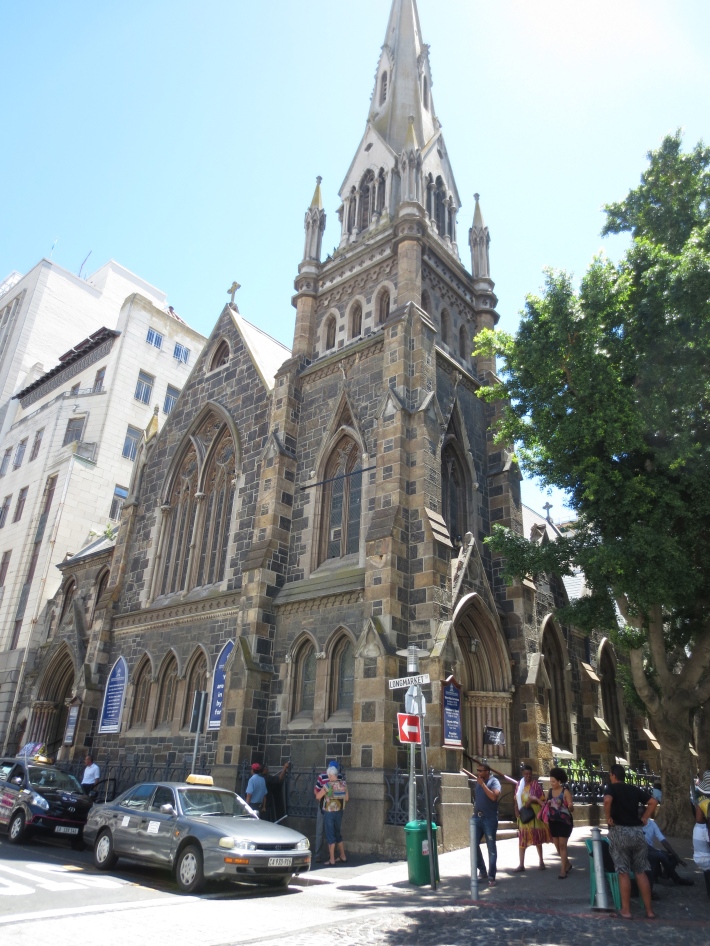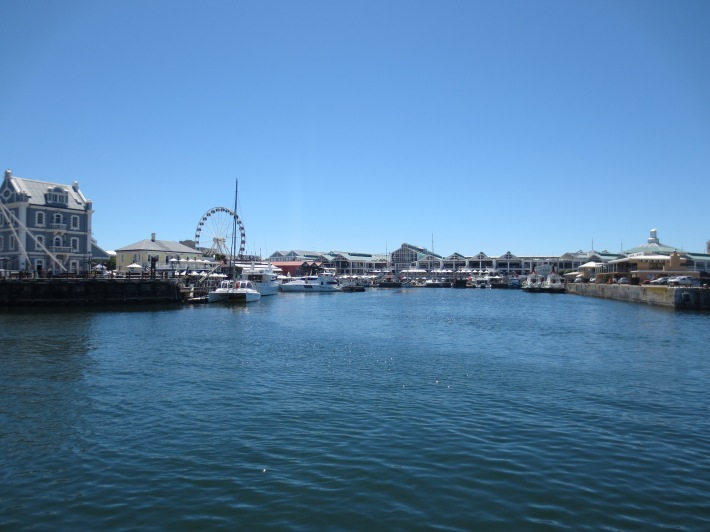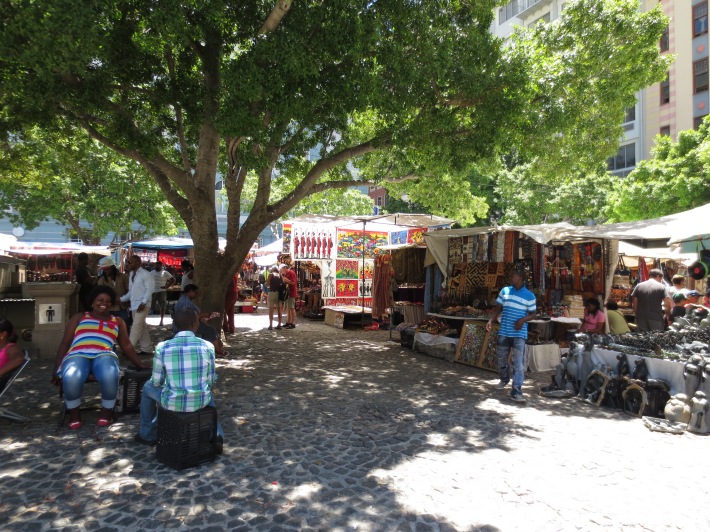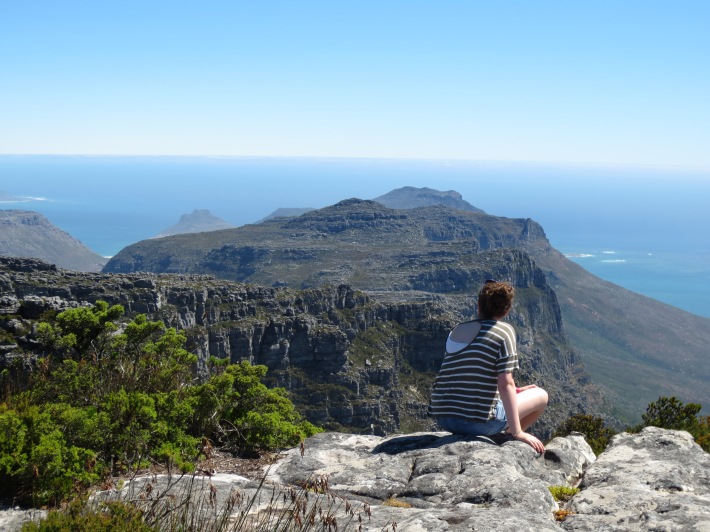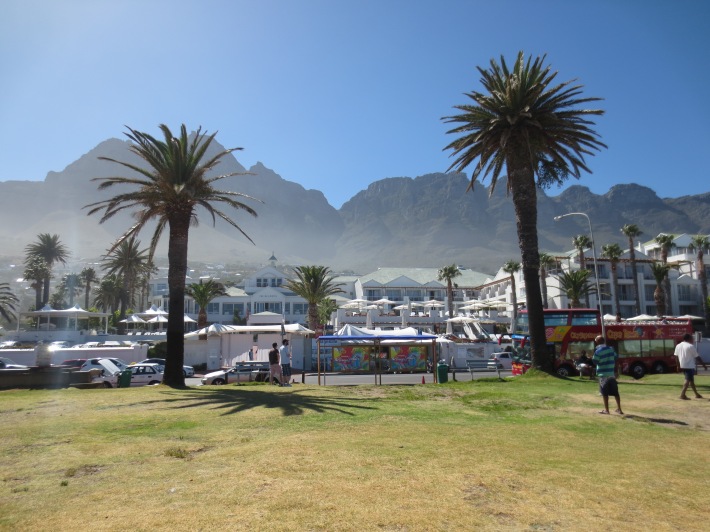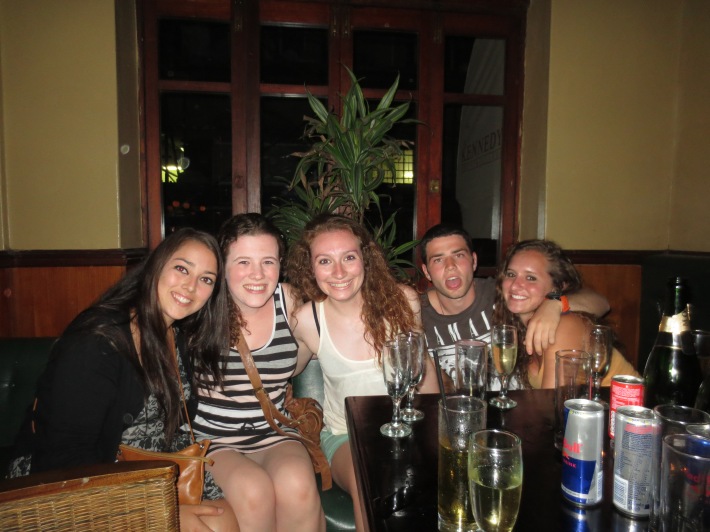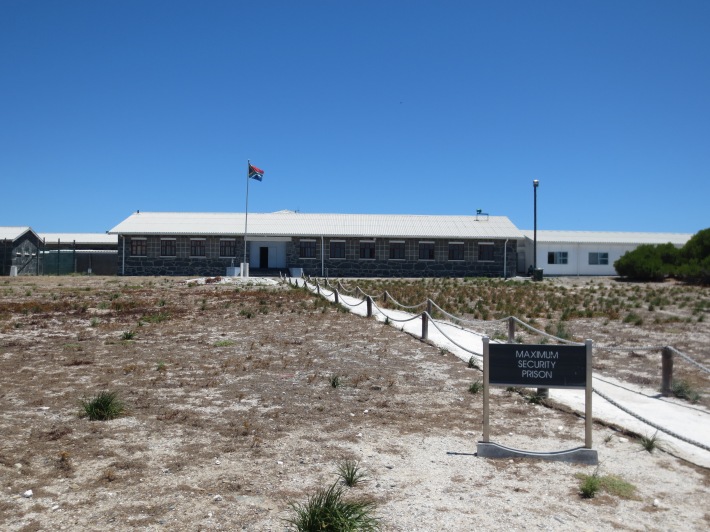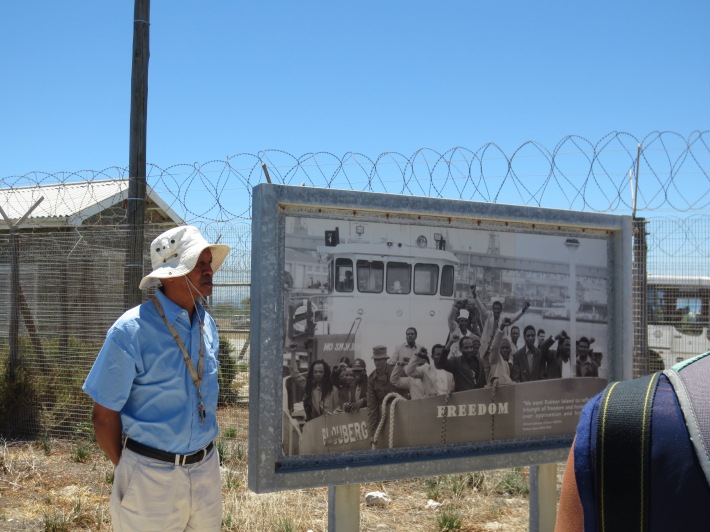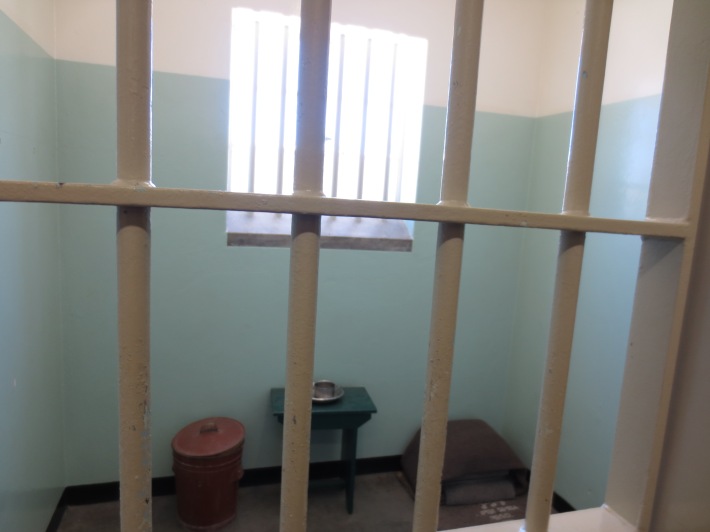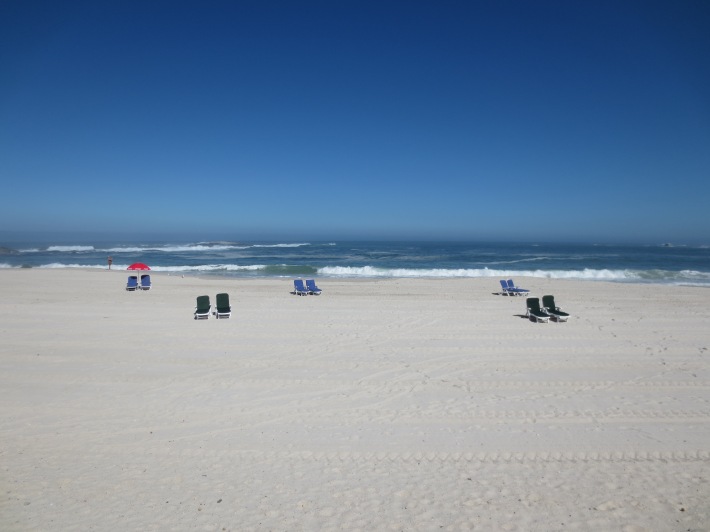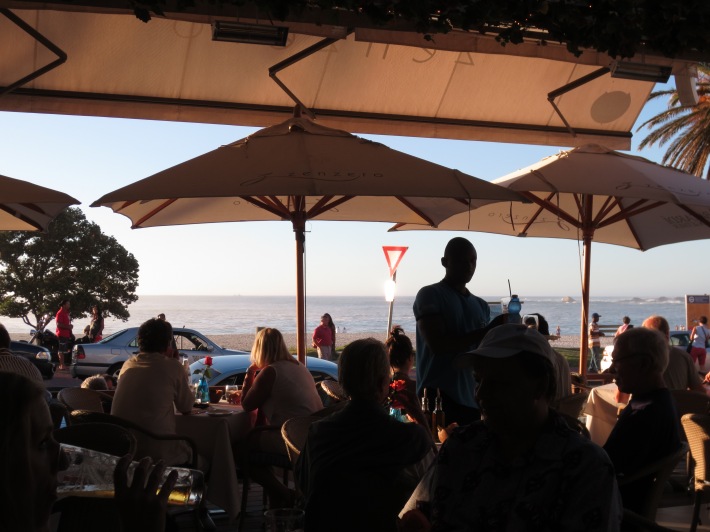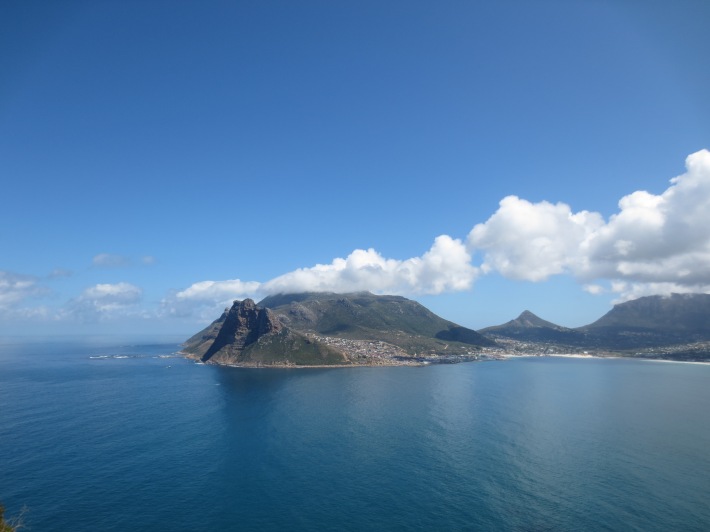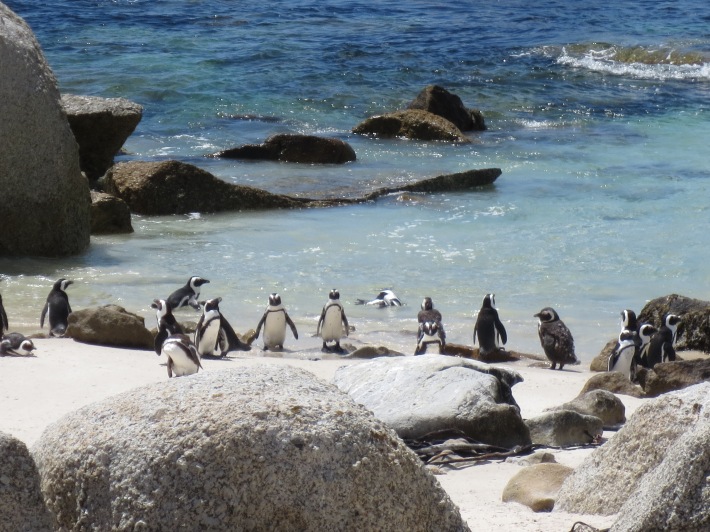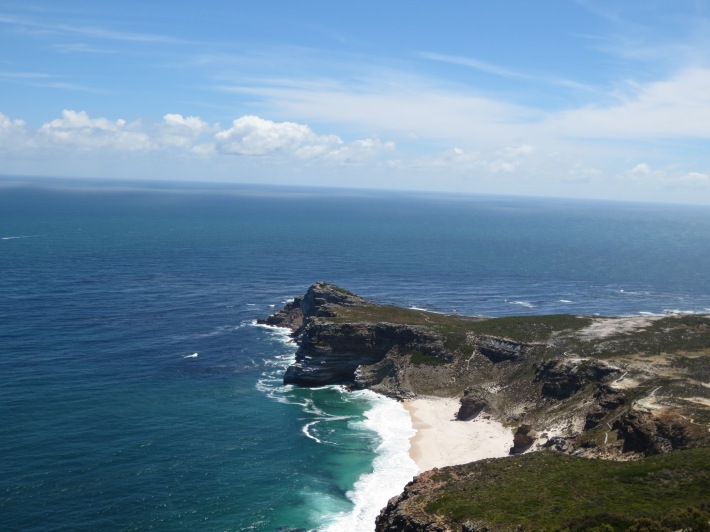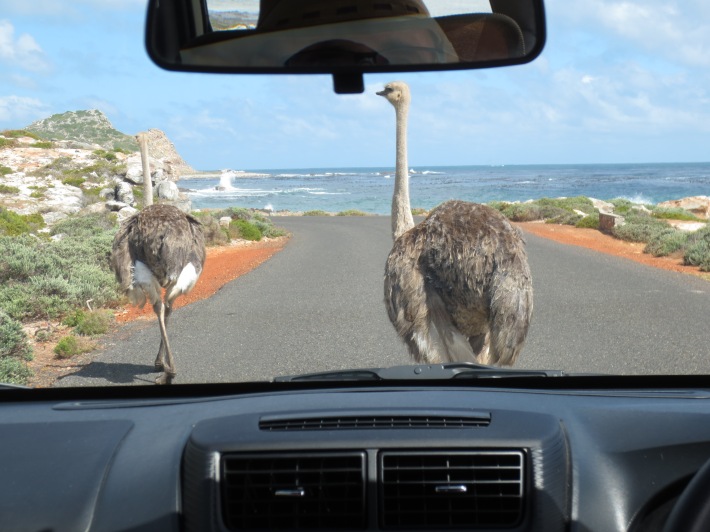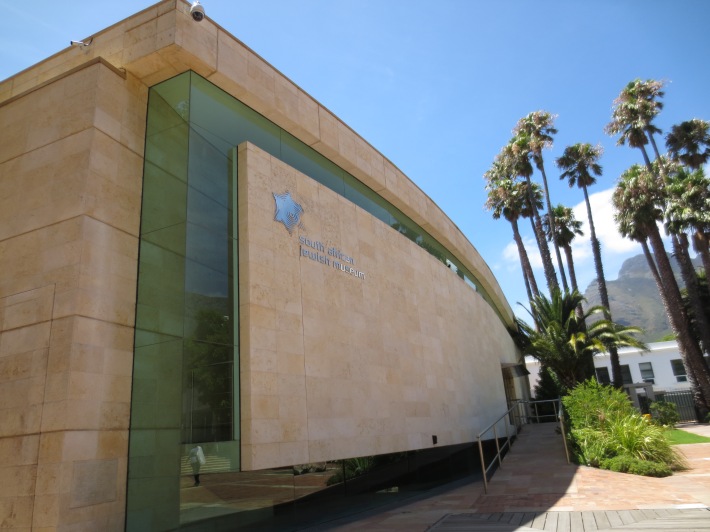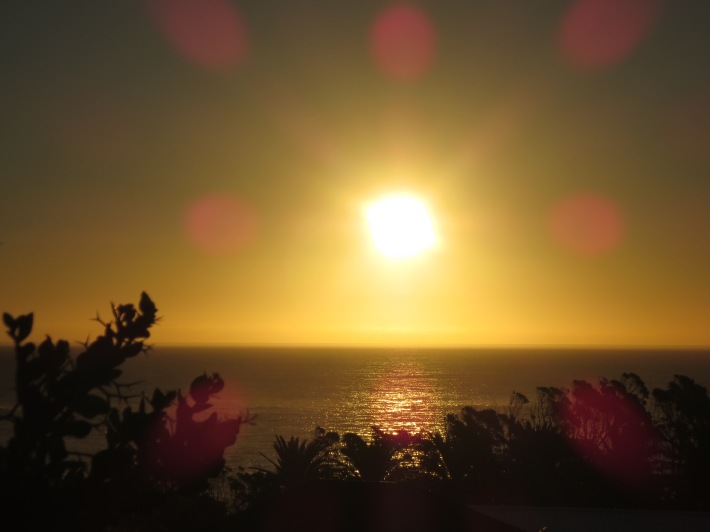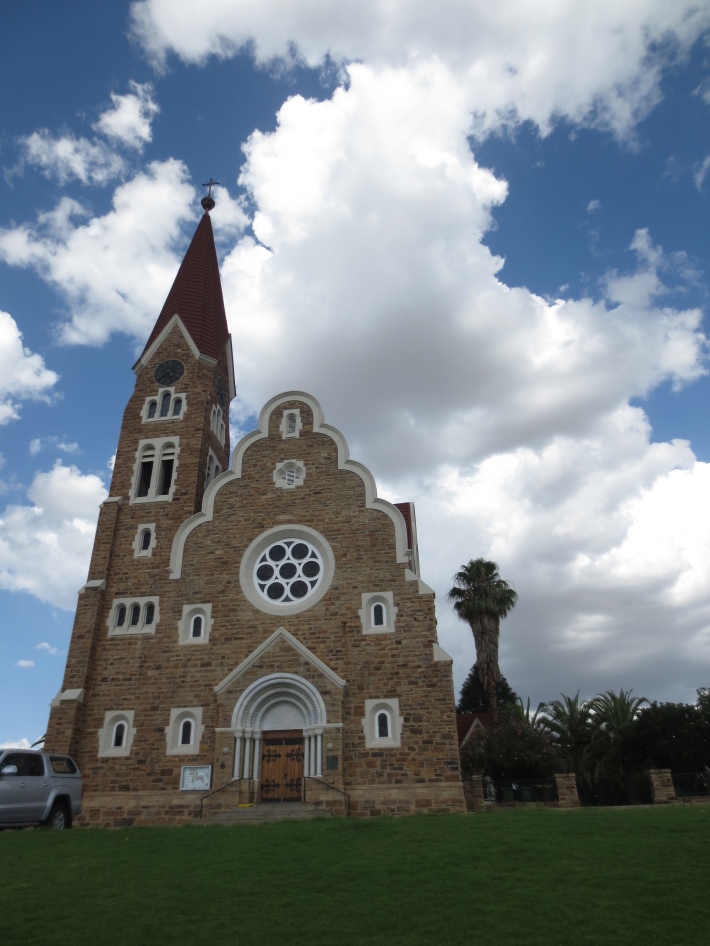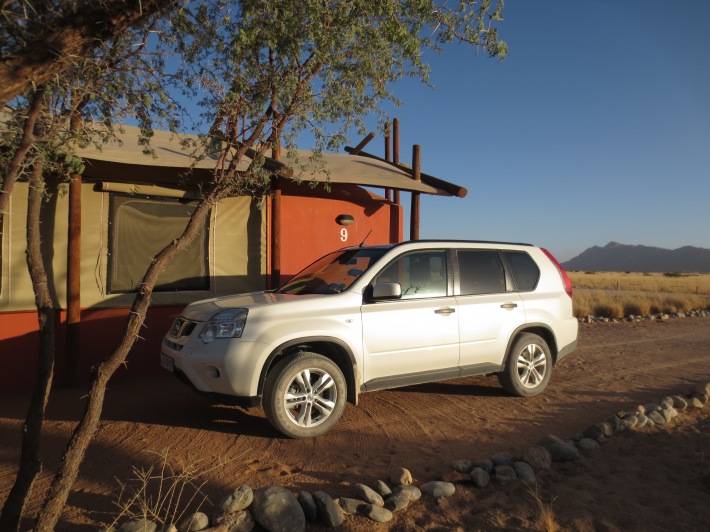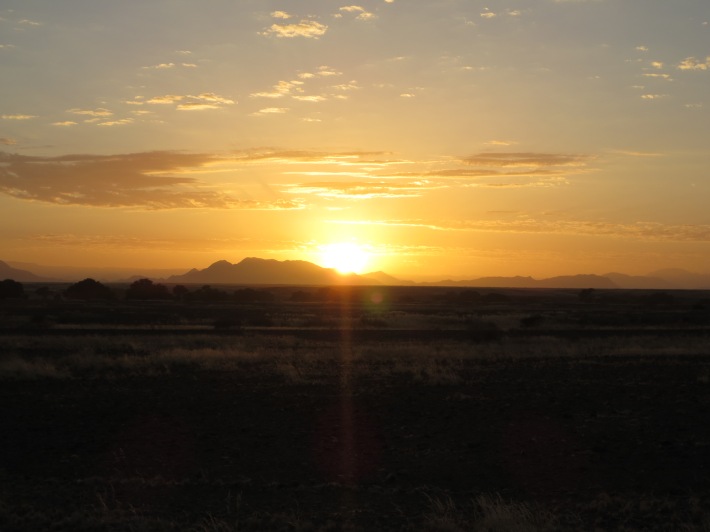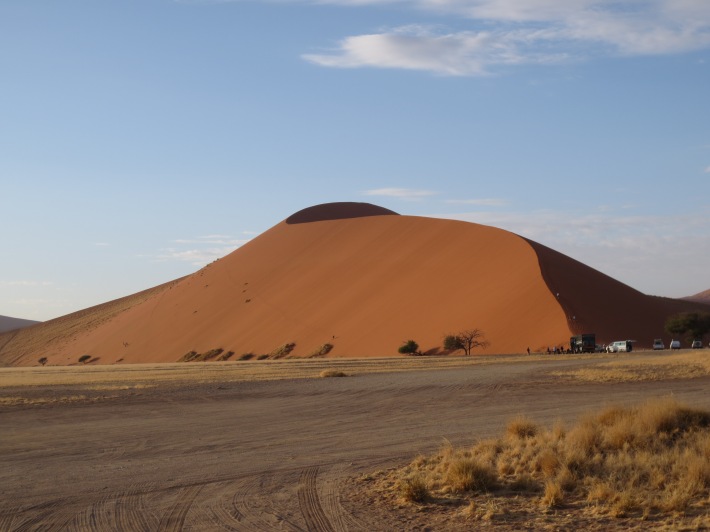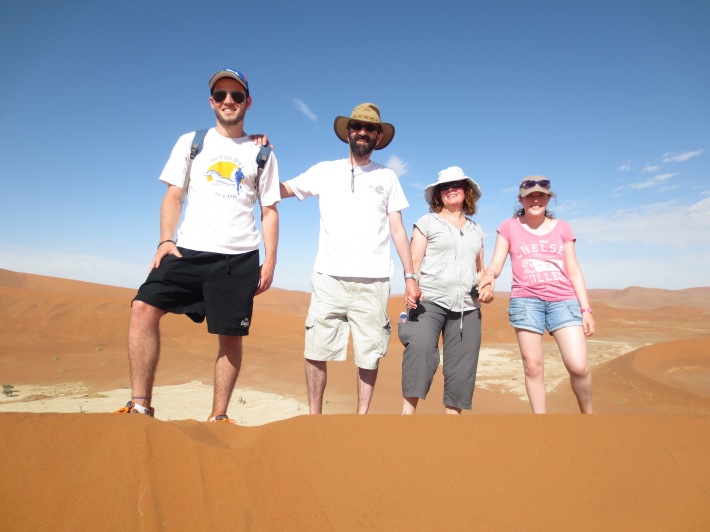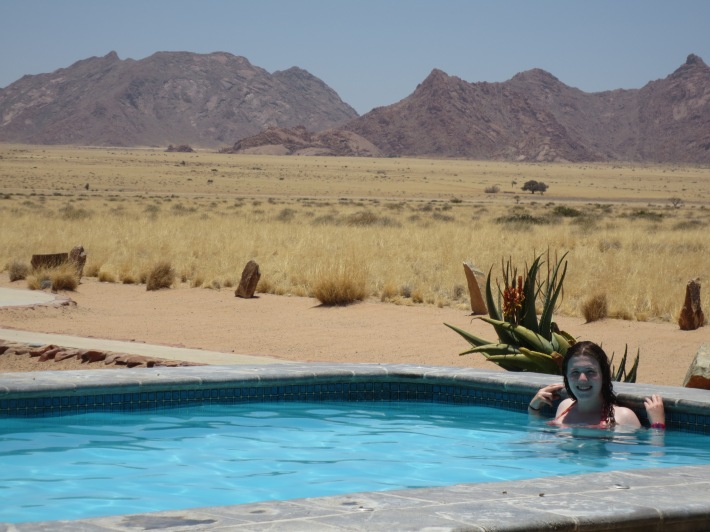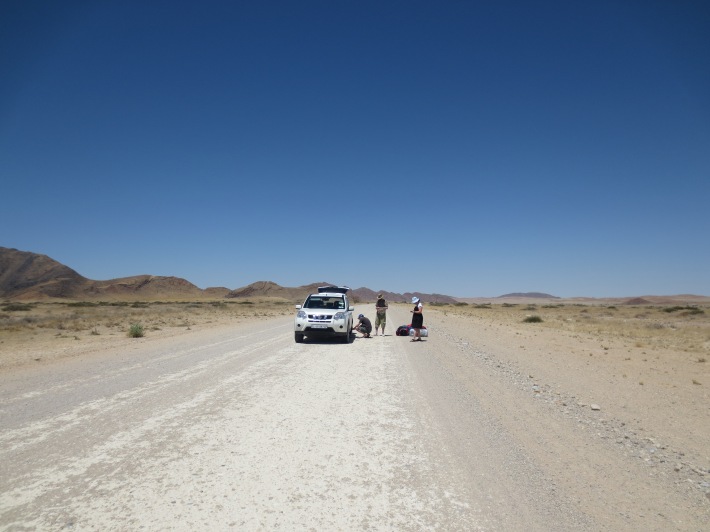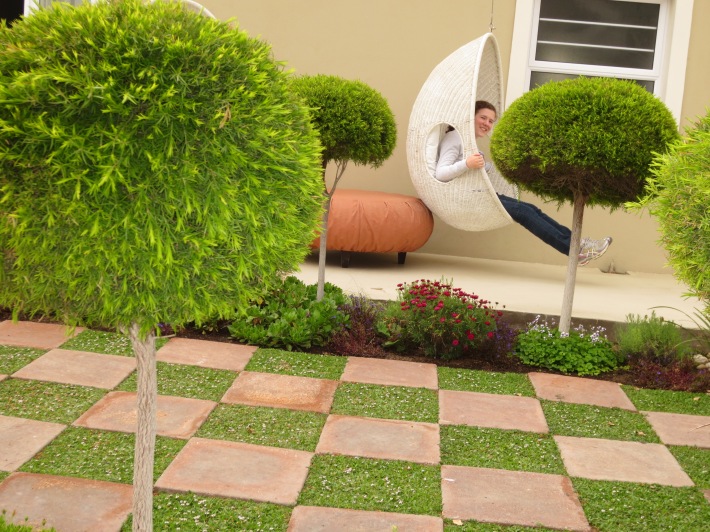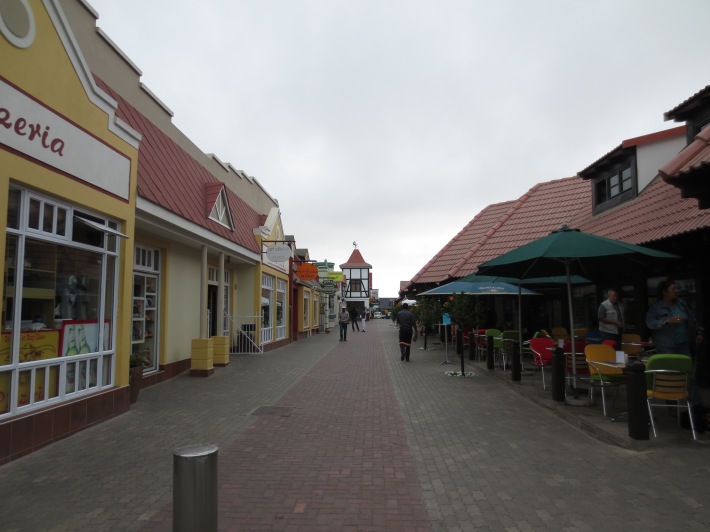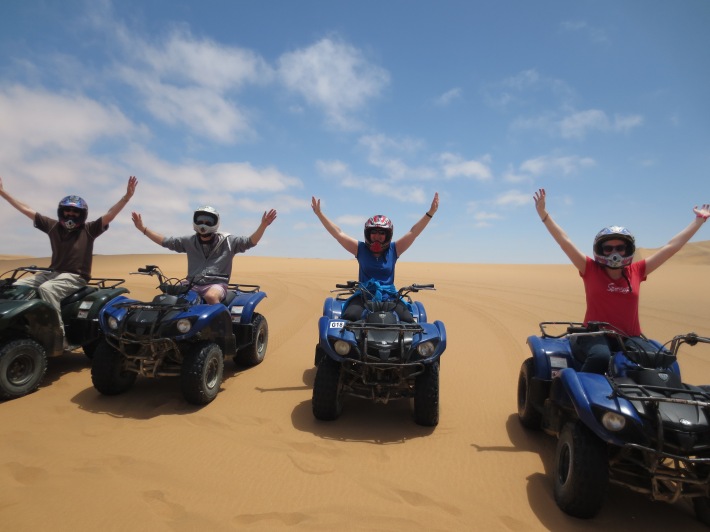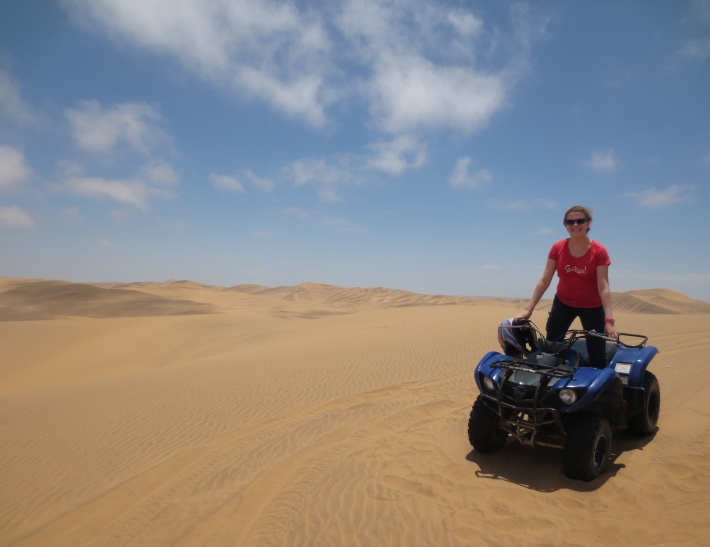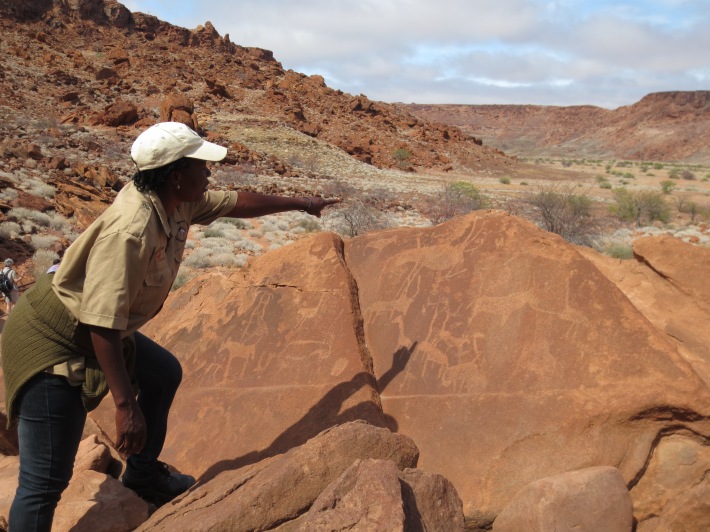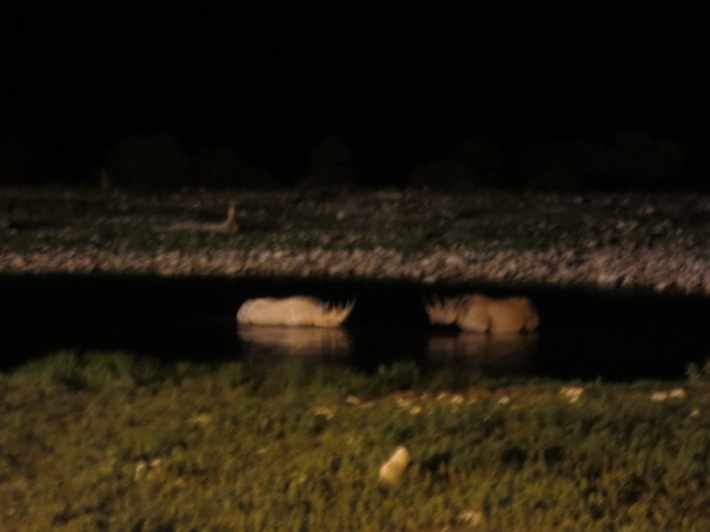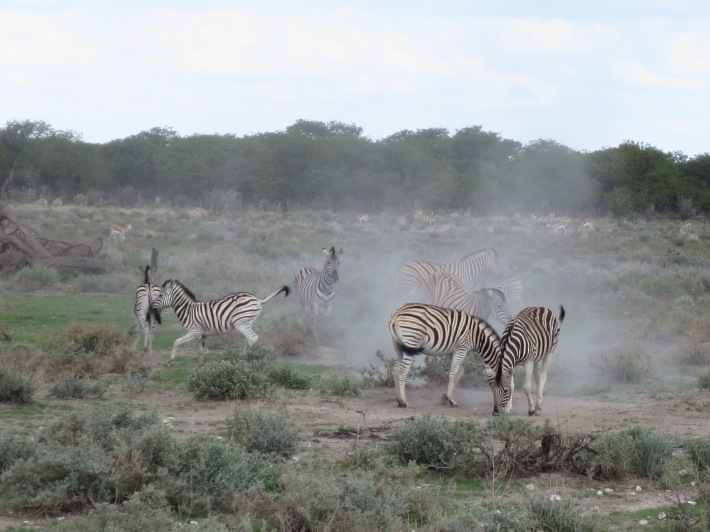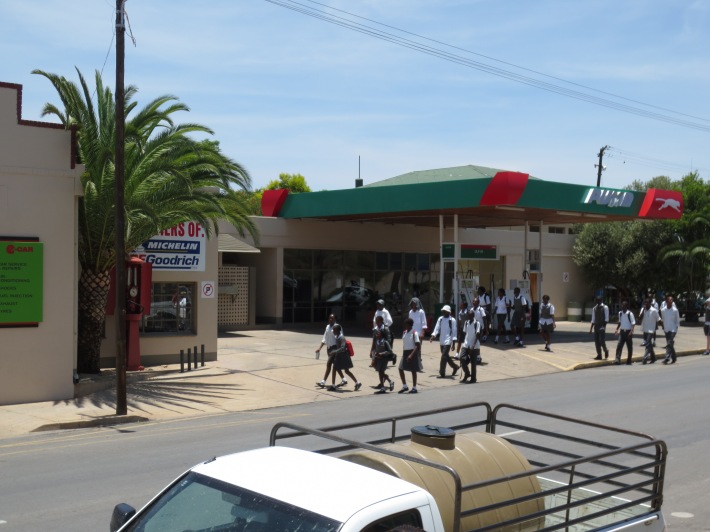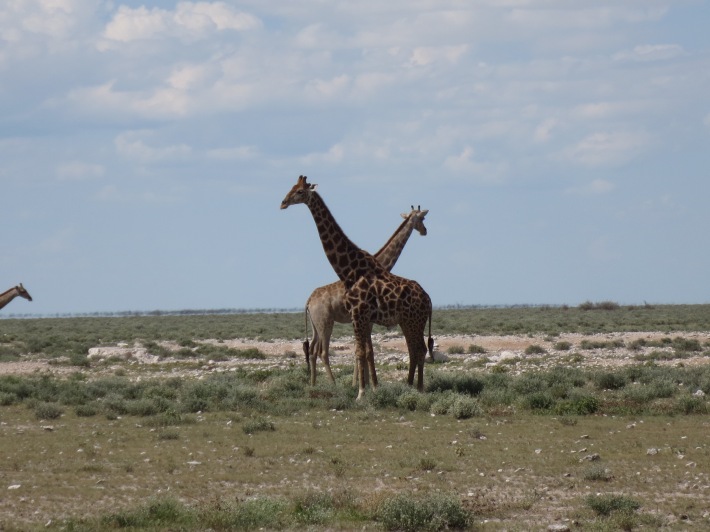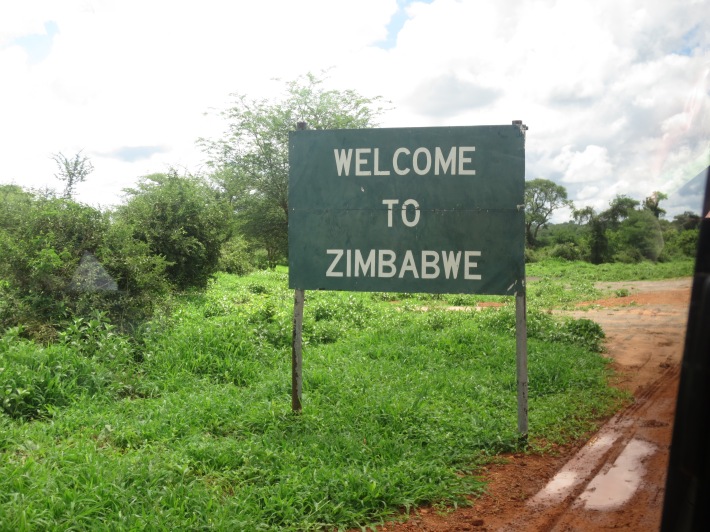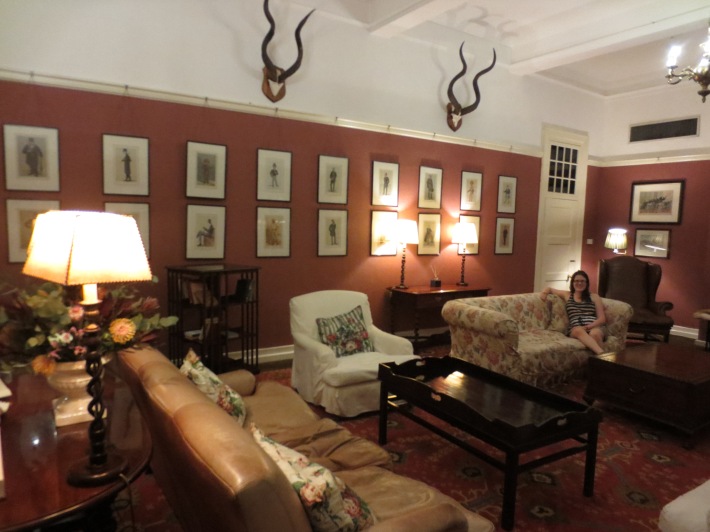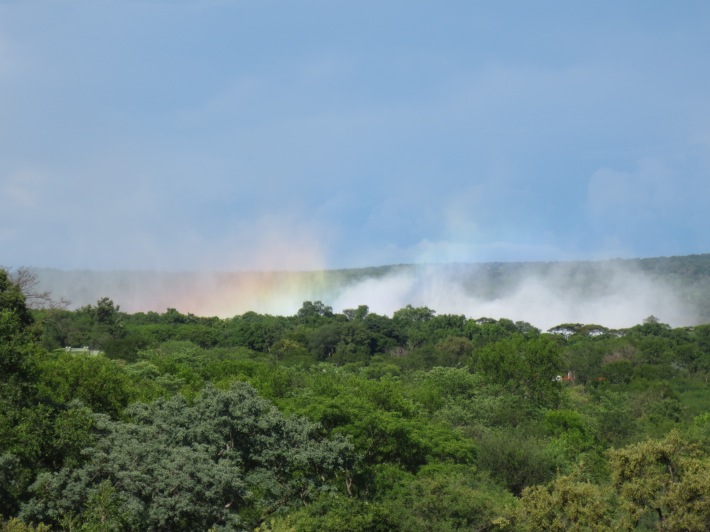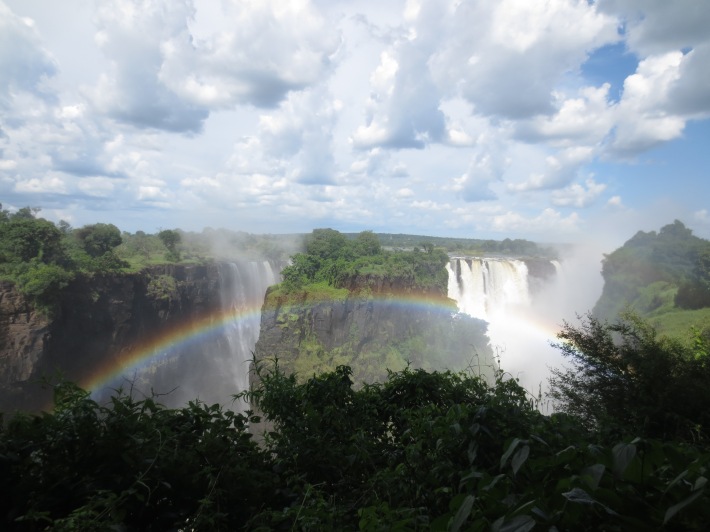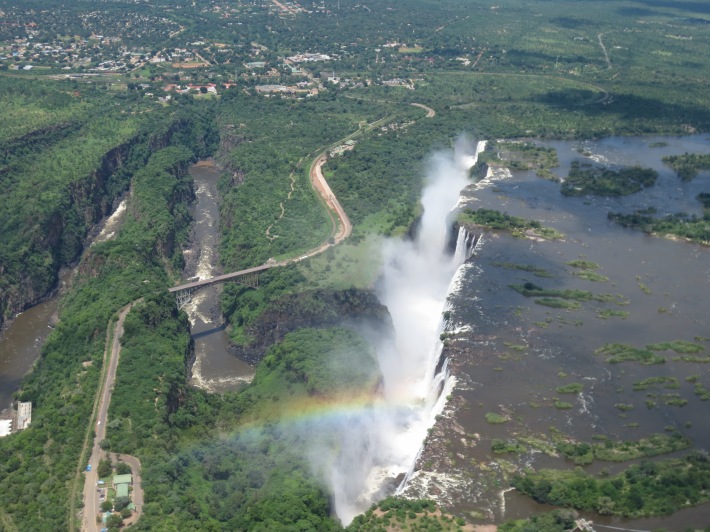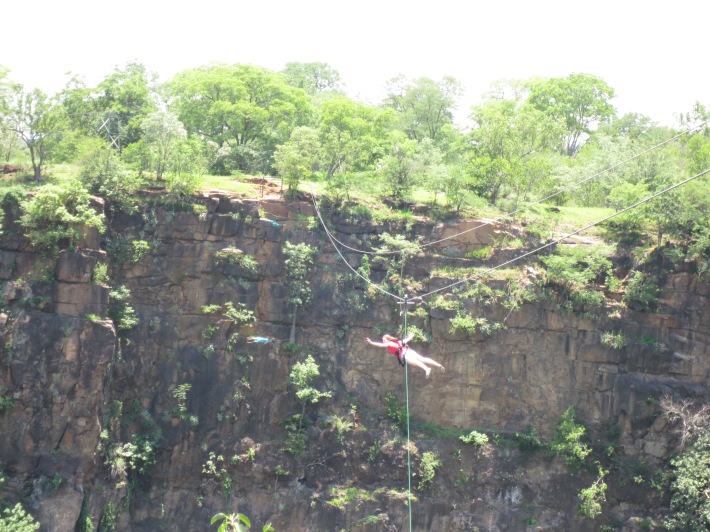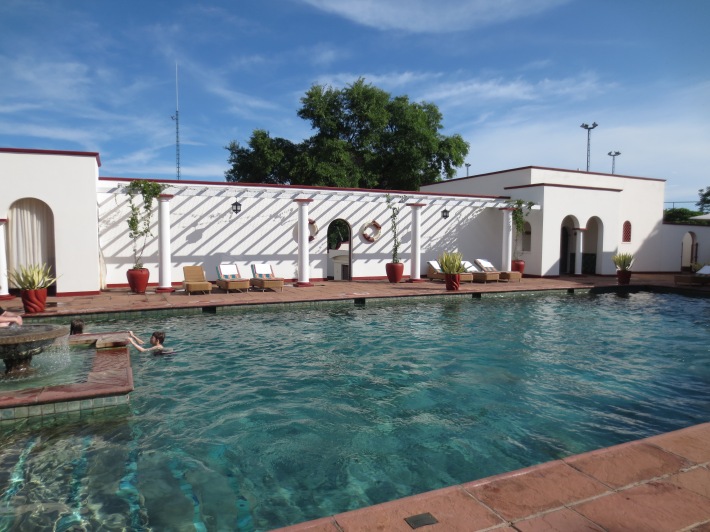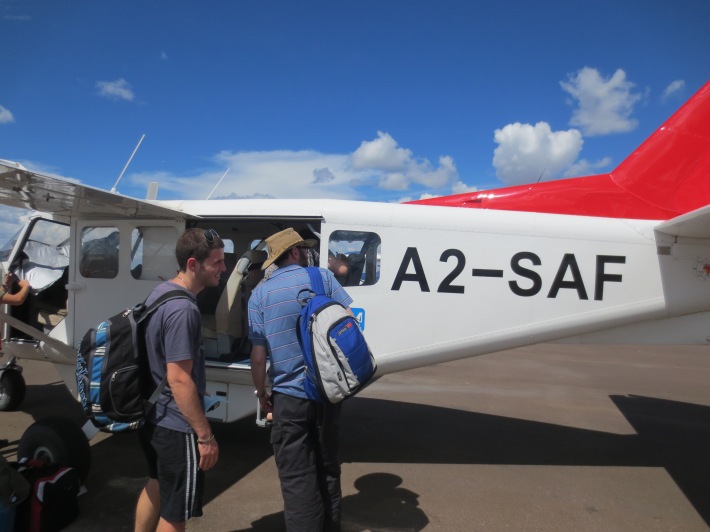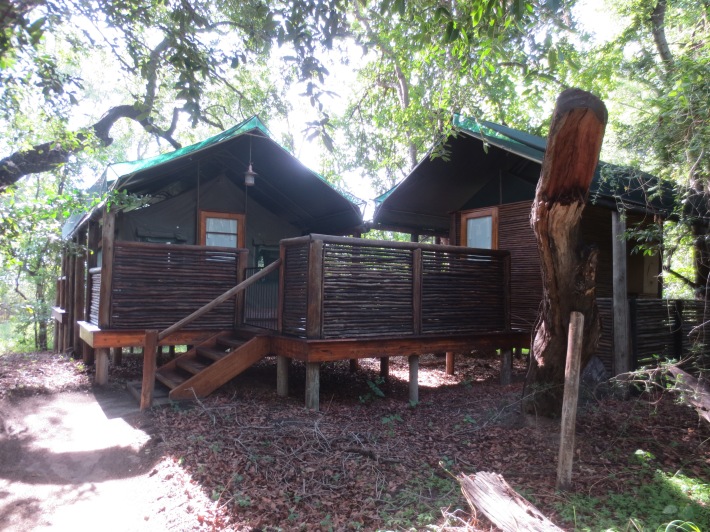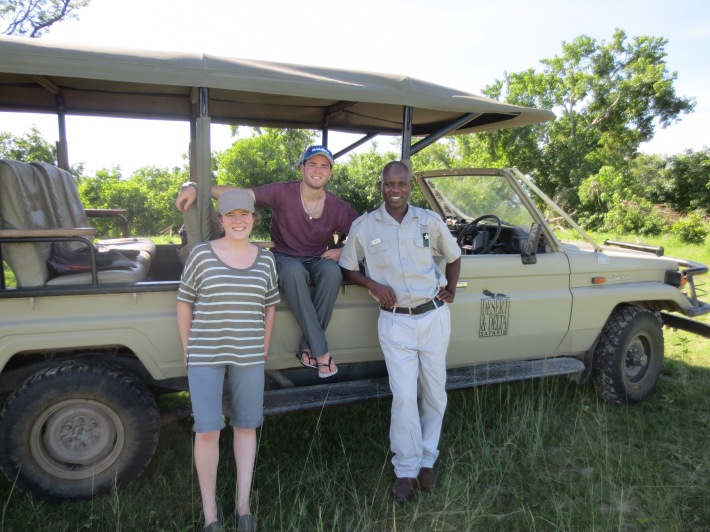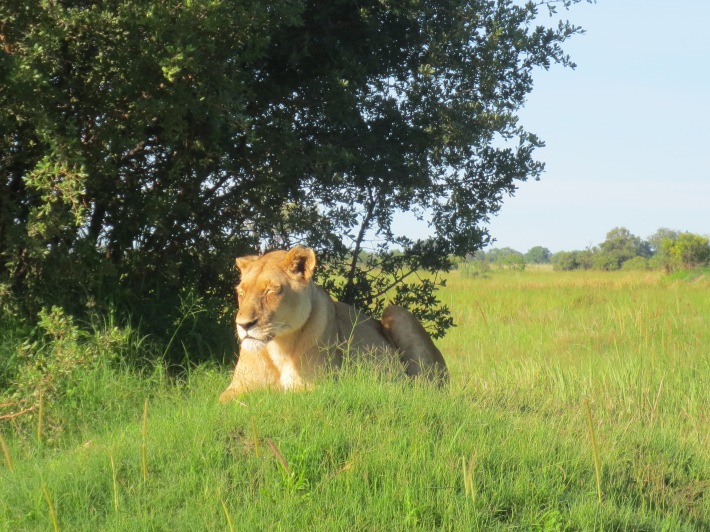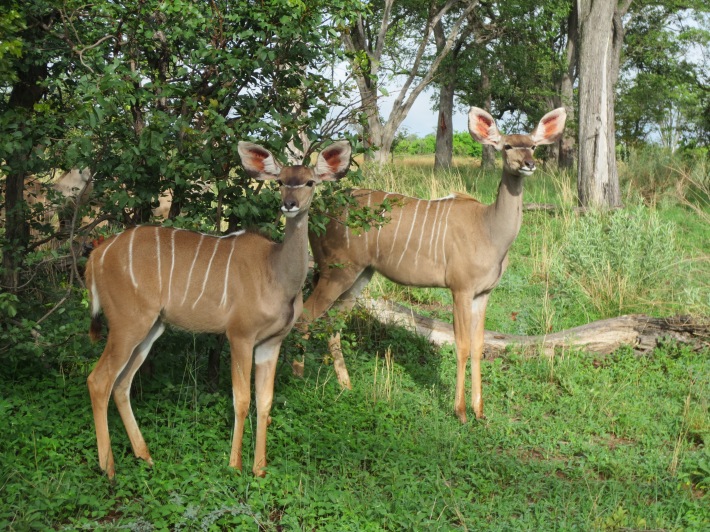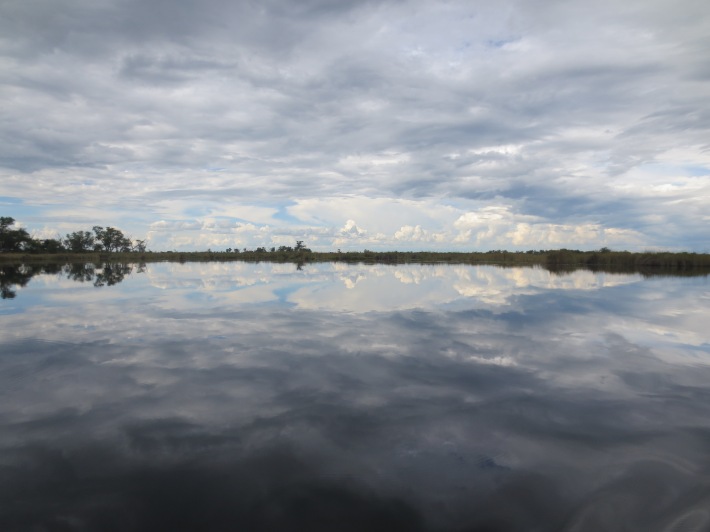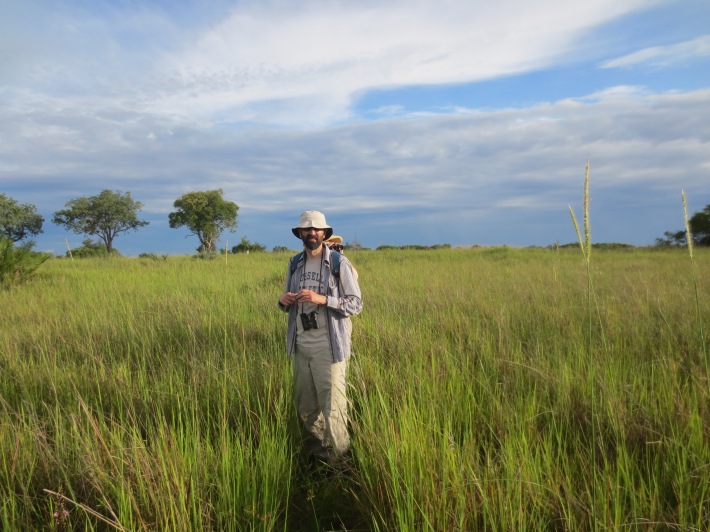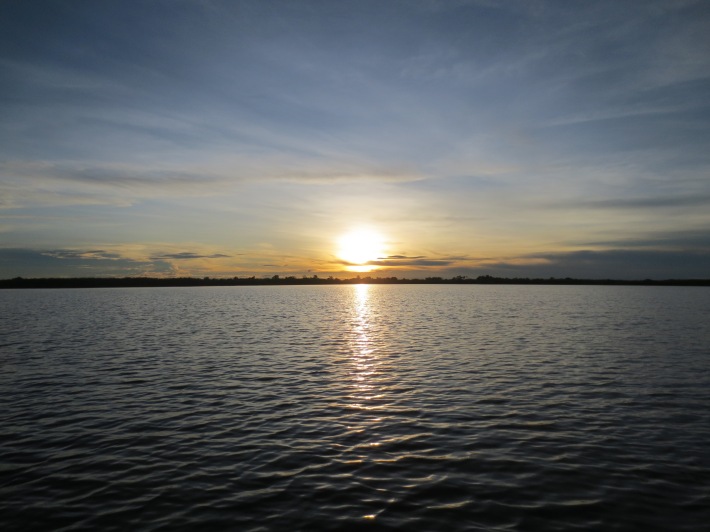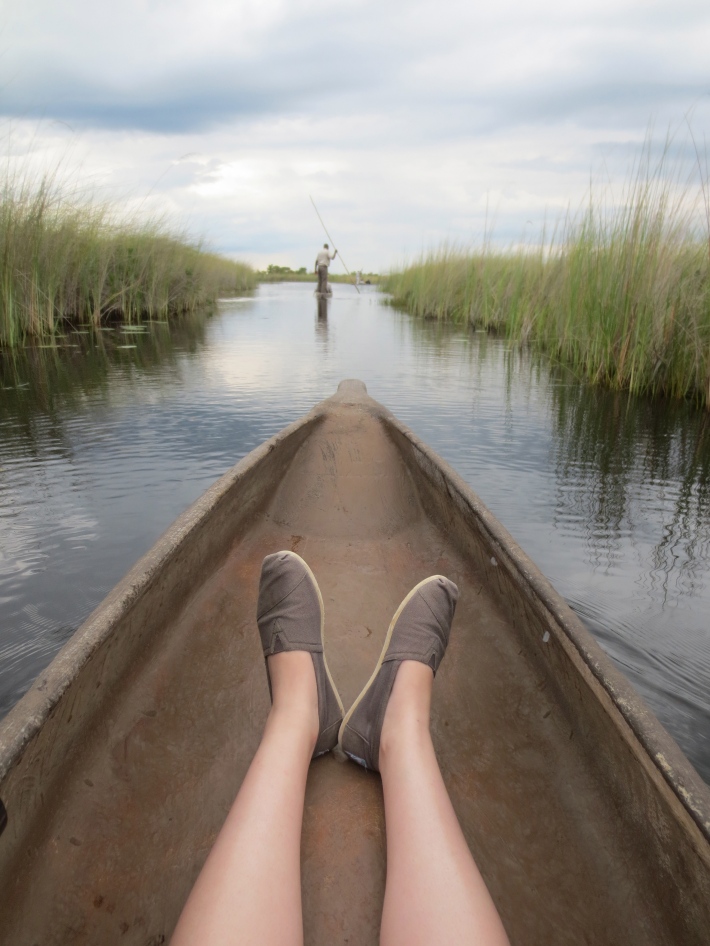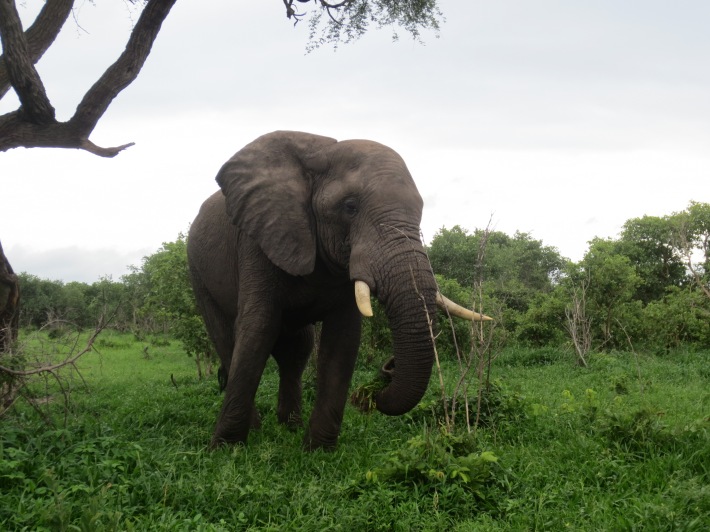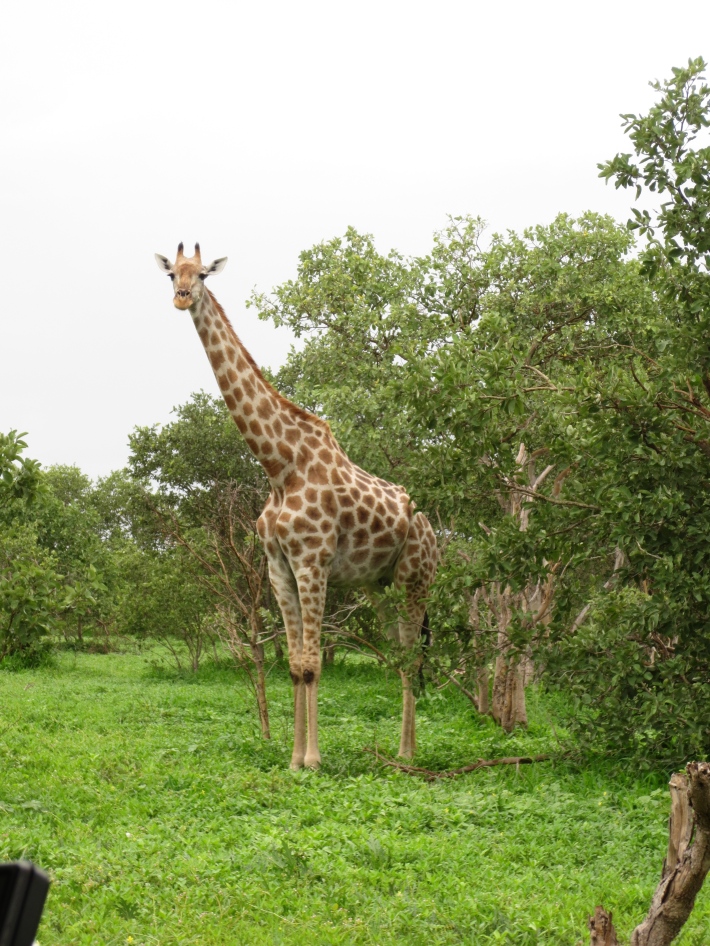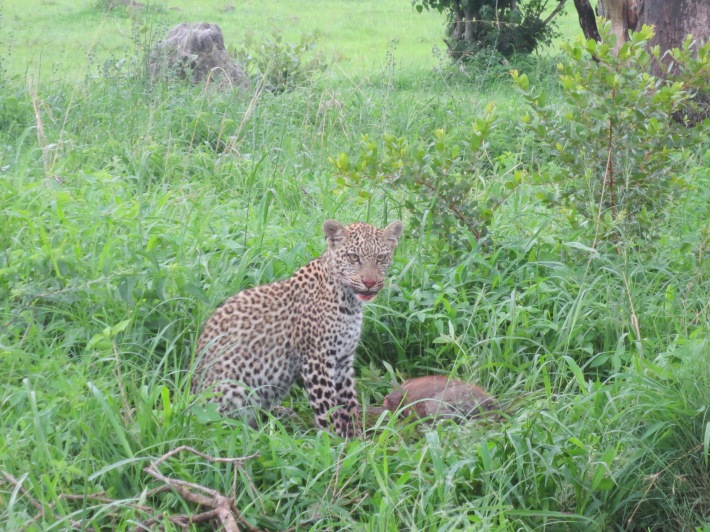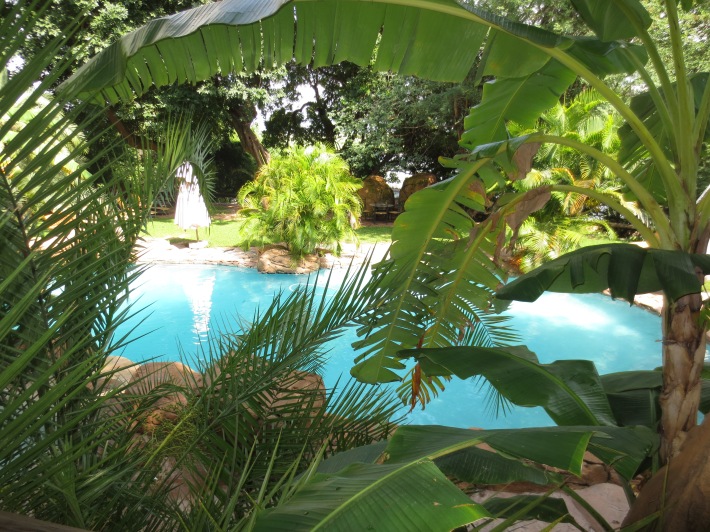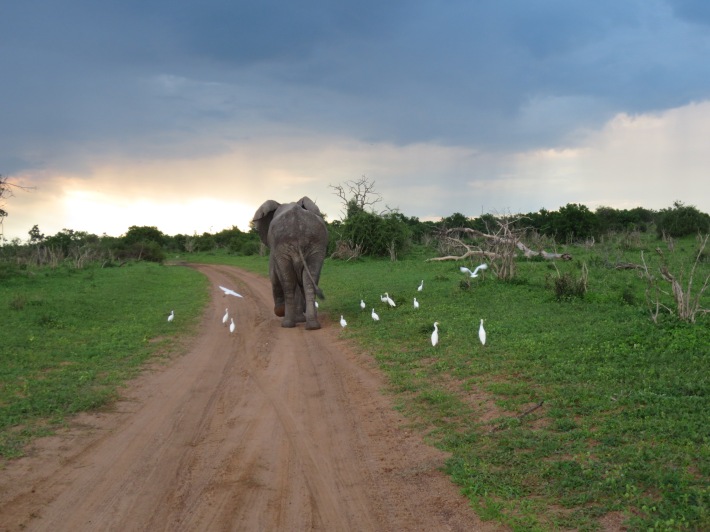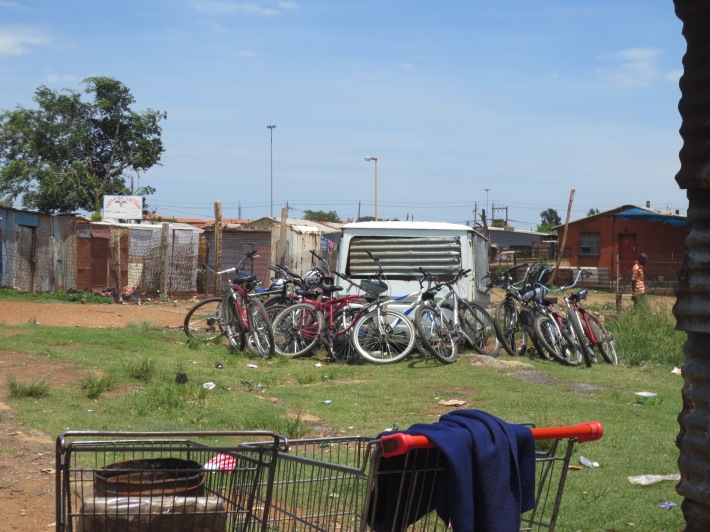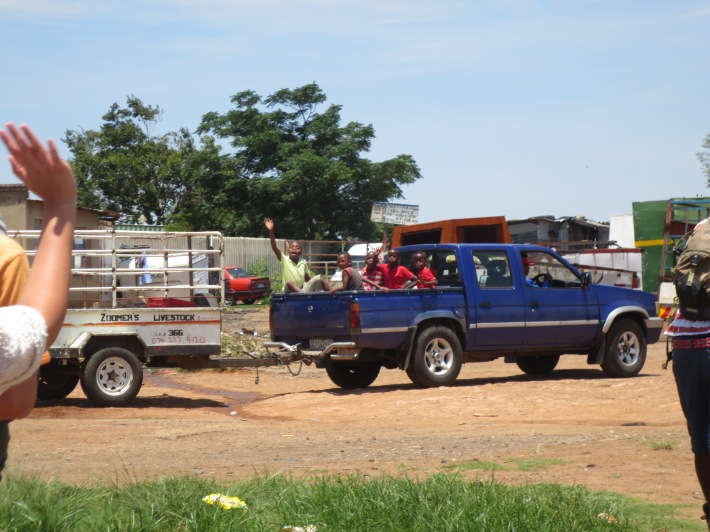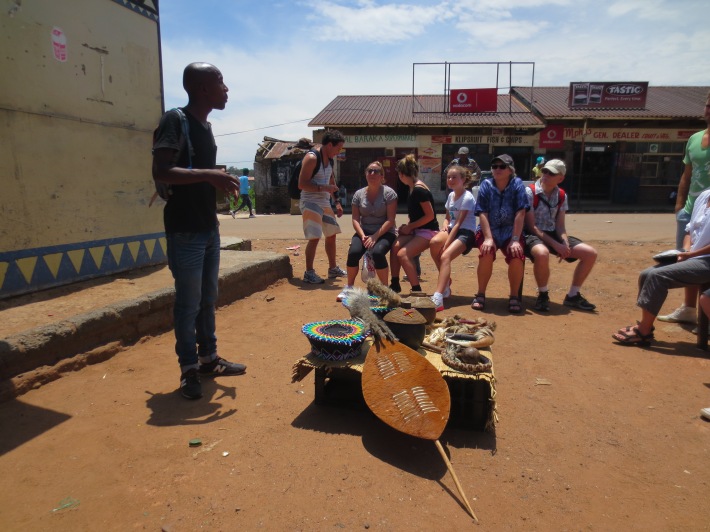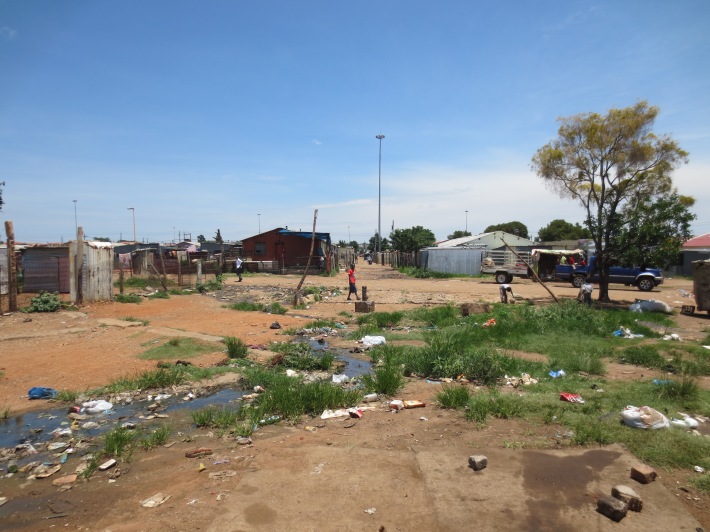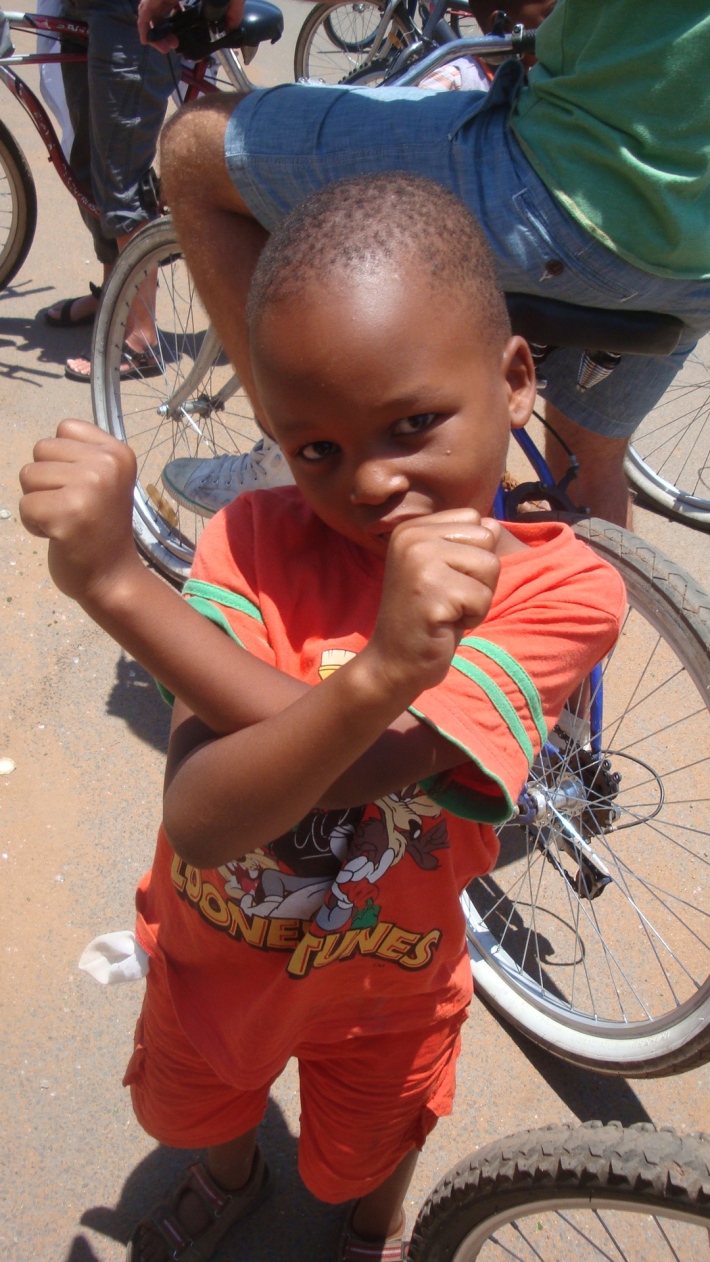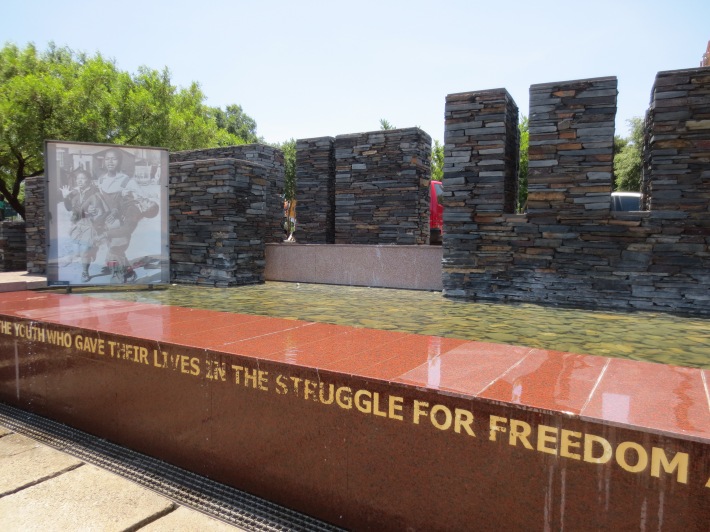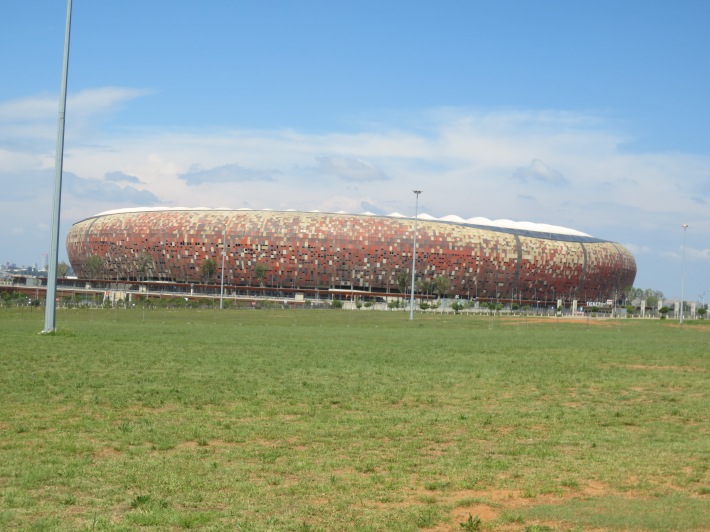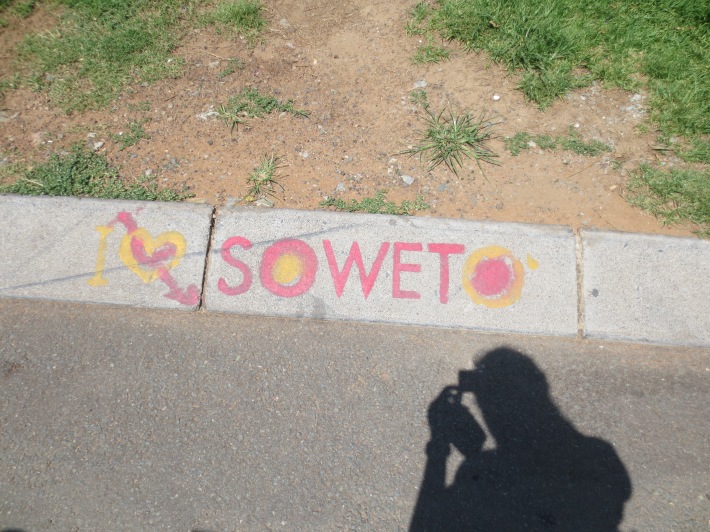I knew I’d like Cape Town, but I didn’t realise I’d love it quite so much. We arrived in the evening from Windhoek on what was one of the bumpiest flights I’ve ever been on.
On our first day, we went on the hop-on hop-off bus. Despite the fact that these red buses can be found in so many of the cities I’ve visited, it was the first time I’d been on one. Primarily because my backpacking friends and I preferred to navigate our own way and spend the money elsewhere. But herein lies a perk of traveling with your family.
So we toured around the city, with running commentary, hopping on and hopping off as we felt inclined. We first descended at the waterfront, where we walked around and looked through a great craft market (for far too long as far as the males were concerned). It had loads of original, hand-made stuff. We also got off in the city centre, where we wandered around an outdoor market and had lunch. And then we got off at Table Mountain, arguably Cape Town’s best known tourist attraction.
The drive part-way up Table Mountain was marvelous in itself. The views over the city and the ocean were spectacular. But they were about to get even more spectacular. We went up to the top of the mountain in a revolving cable car, and the views were seriously awe-inspiring. In fact, Table Mountain is one of the ‘new’ seven wonders of the world – whatever that means. I took photos from every angle many times over. Here are just a couple:
Our hotel was in Camps Bay, a delightful beach about 15 minutes out of the city. It was essentially a strip with lots of restaurants and a few shops. That night, after a fantastic dinner looking out onto the beach, we hit the Cape Town town. Simon and I had met a group of college students from Minnesota back in Etosha, and they happened to have a very similar itenerary to us. They took the same flight as us from Windhoek to Cape Town, so we chatted to them while waiting to board.
As it turns out, a college trip equals going out every night, while a family trip is more likely to equate to being in bed by 10. So a night out was much needed as far as we were concerned. We met a bunch of Norwegian guys who had been on a ship for the last 5 months (or potentially 5 weeks, I’m a little bit hazy on that detail) and bought alcohol like it was water – for all 10 of us. There’s something about going out overseas – it’s always much more fun than at home. Even if your brother’s there and receiving far too much female attention.
The next day we went on a boat, which was not so fortunate given the events of the night before. But we made it to Robben Island, which was interesting and worthwhile. From the 17th to the 20th Centuries, Robben Island served as a place of banishment, isolation and imprisonment. It held many well-known prisoners, including Nelson Mandela. Today it is a world heritage site and museum.
The first part of the tour was a bus tour, where we passed the island’s tiny town, including a church and a post office. We saw some of the prison buildings, and had a view onto the mainland across the water. I suppose it was a little bit similar to Alcatraz, which I visited when I was in San Francisco last year. The most interesting part was being taken through one of the barracks by a former political prisoner. He was really able to give us an idea of what life was like being in prison on Robben Island. It sounds like it was fairly grim.
That afternoon, we went to the beach. But the water was freezing – too cold to dip your feet in, let alone swim. I’m not much of a sunbather – my white, pasty skin is not receptive to it. If I go to the beach, it’s primarily to get into the water. So this made me a bit sad. Nonetheless, you can’t really complain about being on the beach. I went back to the hotel and swam in the pool, and all was well.
That night we had dinner at a restaurant, again with spectacular views of the beach. Afterwards, we went out with our new-found friends. It was Simon’s last night in Cape Town; the following day he was headed back to Johannesburg to stay with some friends. And I was left without a buddy with whom to bemoan Mum and Dad’s occasional annoying traits…
But it certainly wan’t all bad. The next day, we took a drive along the coast, which was reminiscent of the Great Ocean Road or the Big Sur. The scenery was stunning in a big way. We had to get out of the car at almost every view point to take photos.
Eventually we came to Boulder’s Beach, which is beautiful blue water and white sand with penguins swimming around. There are heaps of them, and you can literally be a metre away from the little fellows. After lunch, we continued our drive down to the Cape of Good Hope, which I thought was the southern-most tip of the African continent – but Wikipedia tells me it’s not.
Whatever its geographical co-ordinates, the Cape of Good Hope is spectacular. We climbed up to a lighthouse at Cape Point, and this is the view that we had. Breathtaking, no?
We also stopped at the botanical gardens on the way back, which were beautiful. I’m always up for gardens and parks, especially since being torn away from my beloved Hampstead Heath in London.
The next day was unfortunately the last day of the holiday. We spent the morning at the Cape Town holocaust centre, which was so impressive I would go as far to say that it was core-shaking. It was housed in a whole complex, with a Jewish Museum, a Jewish Library, a cafe, a shop, and more. It just shows how strong and thriving Cape Town’s Jewish community is.
As much as I like to shop, I do regret spending the last afternoon of our African getaway doing it. We should have been out enjoying the beach and the sunshine rather than inside a shopping mall. It was made worse by the fact that it was easily the most disappointing shopping mall I’ve ever been to. Perhaps I’m spoilt with Chadstone on my doorstep, but this was woeful. South African fashion is simply awful. We wandered around for three hours, and the only things I ended up buying were brands we have in Australia that I found in a department store.
We met up with Dad later on. You’d have to pay him good money to spend more than 5 minutes in a shopping centre, and even then, he might not do it. In this particular instance he had the right idea. Nonetheless, we finished the day off nicely with dinner at an Italian restaurant overlooking the beach.
The prospect of going home was unwelcome, especially given the fact that we were about to endure 30 hours of traveling. Leaving paradise to go back home to work is not fun at the best of times.
But I’ve made it. A month later, here I am, back into the swing of things. All the while, of course, I’m reminiscing about a wonderful trip, and dreaming of the next one.
Catch you soon.
